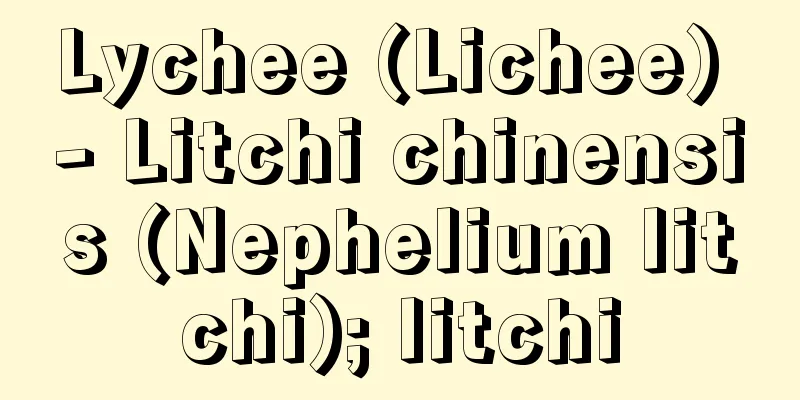Umayyad Caliphate - Umayyad Caliphate

|
An Islamic kingdom on the Iberian Peninsula (756-1031). Abd al-Rahman I, who escaped the massacre of the Umayyad family by the Abbasid Caliphate, crossed the Iberian Peninsula and founded the state in 756. Its capital was Cordoba. In historical sources, it is called the "Umayyad Caliphate of Al-Andalus (the Muslim territory in the Iberian Peninsula)" or the "Umayyad Caliphate of Cordoba". The ruling class was composed of Arabs and Berbers, but the minority of Arabs had political and economic superiority over the majority of Berbers. The indigenous Spaniards and Jews formed the ruled class, and among the former, those who converted to Islam were called Musallim, those who were born Muslims were called Mu'u'rad, and those who remained Christians but Arabized were called Mozarabes. This diversity of ethnic groups and religions was a factor that disrupted law and order from the beginning of the state's founding. To deal with this problem, successive amirs or caliphs made use of Slavic and Frankish slave soldiers (sakaliba) to strengthen their own power, and also waged holy wars (jihad) against Christian regions in the north to redirect domestic discontent and achieve national unity and stability. The foundations of national unity and prosperity were laid during the reign of Abd al-Rahman II (822-852), and after his death, a period of turmoil, the reign of Abd al-Rahman III (912-961) reached its zenith. It was during his reign that the dynasty began to call itself caliphate in opposition to the Fatimid dynasty in Tunisia. The economic foundations of the dynasty were trade with Christian countries in the north, North Africa, and Islamic regions in the east, handicrafts such as textiles, gold and silver, leatherwork, and pottery, and agriculture such as the cultivation of oranges, sugarcane, and cotton. Central administration was under the absolute authority of the Amir (Caliph), with several Wazirs (Visirs) in charge, led by the Hajib (chairman, whose powers were those of Grand Vizier). Each of the 20 or so provinces (Qura) was governed by a Wali (Chief). In terms of culture, despite political conflict with the Abbasid Caliphate, the dynasty was always influenced by the Eastern Islamic world, and singer Ziryab (d. 857) and scholar Abu Ali al-Khali (d. 965) came from Baghdad. However, in the later period of the dynasty, famous poets from Al-Andalus such as Ibn Abd-Rabbih (d. 940), author of Al-Iqd-al-Farid (The Incomparable Necklace), and Ibn Khaniu (d. 973) appeared. In law, the Maliki school became mainstream after Hakam I officially recognized it. In terms of architecture, the library said to have contained 400,000 volumes (built by Hakam II), the Great Mosque of Cordoba, and the Palace of Zahura (6 km west of Cordoba) boast high artistic standards. After Hisham II ascended to the throne at the age of 11 in 976, real political power shifted to the wazirs and hajibs, and after a period of dictatorship under the Amir dynasty (981-1008) who held the position of hajib, the state fell into anarchy and the dynasty was dissolved in 1031. [Masatoshi Iiichi] [References] | | | | | | | |Source: Shogakukan Encyclopedia Nipponica About Encyclopedia Nipponica Information | Legend |
|
イベリア半島にあったイスラム王国(756~1031)。アッバース朝によるウマイヤ家一族の虐殺の難を逃れたアブドゥル・ラフマーン1世がイベリア半島に渡り、756年に建国した。首都はコルドバ。史料では「アル・アンダルス(イベリア半島におけるイスラム教徒の領地)のウマイヤ朝」または「コルドバのウマイヤ朝」とよばれる。支配層はアラブ人とベルベル人から構成されたが、少数のアラブ人が多数のベルベル人より政治的、経済的に優位にたっていた。土着のスペイン人とユダヤ教徒は被支配層を形成したが、前者のうちイスラムへの改宗者はムサーリム、生まれながらのムスリム(イスラム教徒)はムワッラド、キリスト教徒のままでアラブ化した者はモサラベとよばれた。このような構成民族と宗教の多様さは、建国の初めから治安を乱す要因であった。この問題に対し、代々のアミールまたはカリフは自己の権力強化のためにスラブ人やフランク人の奴隷兵(サカーリバ)を重用し、また国内の不満を外に向けて国内統一と安定を得るために、北方のキリスト教徒地域への聖戦(ジハード)を行った。国内統一と繁栄の基礎が築かれたアブドゥル・ラフマーン2世の時代(822~852)と、彼の死後の混乱期を経て、アブドゥル・ラフマーン3世の時代(912~961)に最盛期に達した。チュニジアのファーティマ朝に対抗してカリフを名のるようになったのも、彼の治世からである。王朝の経済的基礎は、北方のキリスト教国や北アフリカや東方イスラム地域との交易活動、織物、金銀や革細工、陶器などの手工業、オレンジやサトウキビやワタなどを栽培する農業にあった。中央行政はアミール(カリフ)の絶対的権限下に、ハージブ(侍従の意。権能は大宰相)を中心に複数のワジール(宰相)が担当した。20余の県(クーラ)はそれぞれワーリー(長官)によって統治された。 文化面では、アッバース朝との政治的対立にもかかわらず、つねに東方イスラム世界の影響を受け、歌手のジルヤーブ(857没)や学者のアブー・アリー・アル・カーリー(965没)などがバグダードから来住した。しかし王朝後期には、『アル・イクドル・ファリード(無類の頸(くび)飾り)』の著者であるイブン・アブド・ラッビヒ(940没)やイブン・ハーニウ(973没)らのアル・アンダルス出身の著名な詩人が出現した。法学では、ハカム1世がマーリキー学派を公認してから同派が主流になった。建築では、40万冊を収めていたといわれる図書館(ハカム2世建設)、コルドバの大モスク、ザフラーの宮殿(コルドバの西6キロメートル)などが芸術的水準の高さを誇っている。 976年ヒシャーム2世が11歳で即位してから、政治の実権はワジールやハージブに移り、ハージブ職についたアーミル家の独裁時代(981~1008)ののち、無政府状態となって1031年に王朝は滅亡した。 [私市正年] [参照項目] | | | | | | | |出典 小学館 日本大百科全書(ニッポニカ)日本大百科全書(ニッポニカ)について 情報 | 凡例 |
Recommend
Financial Market
In a broad sense, it refers to all markets where ...
Oringen Tournament - Oringen Tournament
…In Line OL, instead of posts, a line is shown on...
fuel oil
…It can also refer to heavy oil obtained by disti...
Bougeois
...The western region, which is part of the Armou...
Cuvier, Georges Léopold Chrétien Frédéric Dagobert, Baron
Born: August 23, 1769, Montbéliard Died: May 13, 1...
Temperate monsoon climate - Ontaimonsoonkikou
Please see the "Temperate Monsoon Climate&qu...
local breed
…Wheat is a crop that has been introduced to Japa...
Ham Nghi (English spelling)
1872‐1947 The eighth emperor of the Nguyen Dynasty...
Support - Edge
〘 noun 〙 (also "Fuji") ① (━ suru) To giv...
Jirocho Shimizu - Jirocho Shimizu
Year of death: June 12, 1893 (Meiji 26) Year of bi...
Empress of India
…the name given to India during the period when B...
Kanpeisha - Kanpeisha
One of the old ranks of shrines. In ancient times,...
beaver hat
…A hat with a high crown and flat top worn by men...
Eichinger, I.
…Born near Frankfurt an der Oder, he studied law ...
Erebus [Mountain] - Erebus
An active volcano on Ross Island, located at the s...









